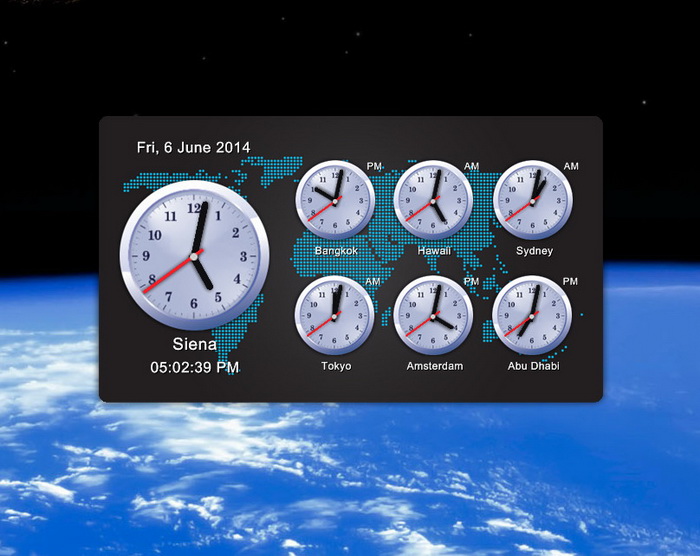

Scientists created the time zone map by studying how the Earth moves. However, in 1883, the United States began to use four standard time zones and in 1884 Britain sought to gain international acceptance for time zones around the world. The transportation sector sought to address that with the introduction of standard time zones for their purposes, which was partially successful. However, early use of time zones was confusing, as different stations along a single railroad could have had different standard times, therefore, confusing passengers and even railway staff. The fact that a standard timekeeping system was needed to facilitate accurate legal and commercial dealings was clear to people as early as the eighteenth century. Imagine the confusion that would ensue if different places around the world observed different time instead of sticking to a global system: we’d never get anything done or agree on anything! Personal communications, airplane and shipping schedules, international meetings, transport – the entire system would collapse if there was no timekeeping system to ensure we’re all on the same page. The primary purpose of time zones around the world is to facilitate transportation and communication. But what are time zones in the first place, and how did we come up with them? Let‘s dig a little deeper: History of Time Zones This is why a time zone converter tool is your best bet when trying to figure out time zone differences around the world. Curiously enough, some countries, despite being immensely vast, only have one time zone (China), while others who are relatively small span over 12 time zones (France – because it still holds territories around the world).
#WORLD TIME CLOCK CONVERTER FULL#
Some places, like Nepal and India, offset their time zones by 30 minutes or 45 minutes instead of a full hour, adding to the confusion. In addition, the time zone converter tool will give you accurate results taking daylight saving time amendments into account: some countries around the world observe daylight saving time, others don’t, and others still are split between regions, making it that much harder to figure out exactly what time is it in a particular location.įinally, not all countries have the same one-hour difference. Just input any date: past, present, or in the future if you’re trying to plan ahead, and you can instantly see the result helping you schedule your communications better.


Using our time zone converter tool, you can find the time difference between your selected cities with our world time converter. If you manage several teams around the world or communicate with people in multiple cities or countries, this tool can help you stay on top of time zone variations across the board. A time zone converter is an invaluable tool if you work, communicate, or socialize with people around the world – after all, no one wants to be interrupted by a phone call at midnight or be asked to submit a project by 4 am in the morning. All you need to do is select your own time zone, pick the country or city you’re looking at, and you’ll instantly see the result. The simplest and fastest way to find out what time is it in any given country or city around the world is using a time zone converter. But let’s face it: it’s impossible to know all the time zones around the globe, not to mention factors like daylight saving adjustments or the fact that some countries have a time offset of 30 or 54 minutes instead of whole hour (we’re looking at you, India!). Time is shown in hours and minutes since midnight.If it’s lunch break in London, what time is it in Tokyo? If you know your time zones well, you can quickly calculate the time differences between countries. The day runs from midnight to midnight and is divided into 24 hours from 0 (midnight) to 23. The abbreviations AM and PM are from Latin: The day is split into two 12 hour periods running from midnight to noon (AM hours), and noon to midnight (PM hours). The table below shows the conversion between the 12 hour and 24 hour clock systems: 12 hour clock

In the 12 hour clock method, it is 12:00 twice a day at midnight (AM) and noon (PM). Most countries prefer the 24 hour clock method, but the 12 hour clock is widely used in Latin America and English-speaking countries. First there's the 12 hour clock that uses AM and PM, and then there's the 24 hour clock. There are two primary methods of showing the time.


 0 kommentar(er)
0 kommentar(er)
